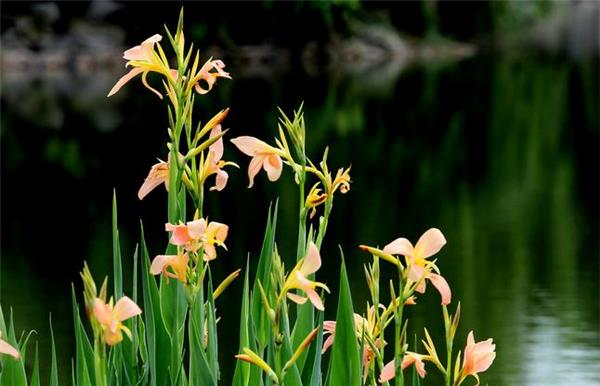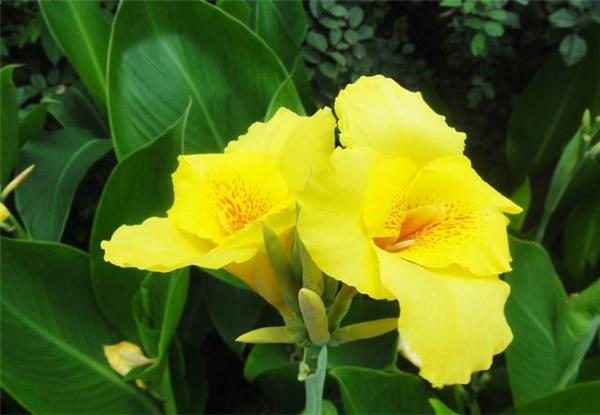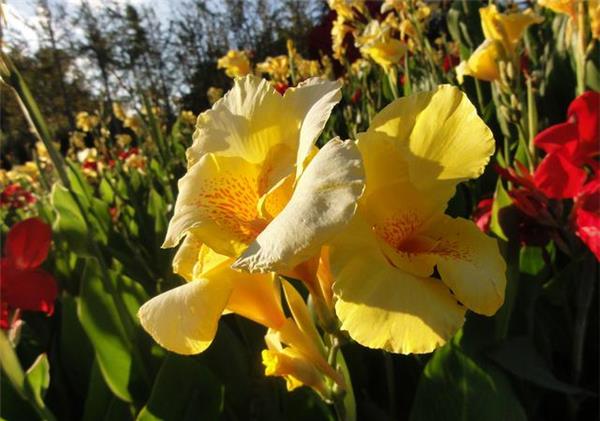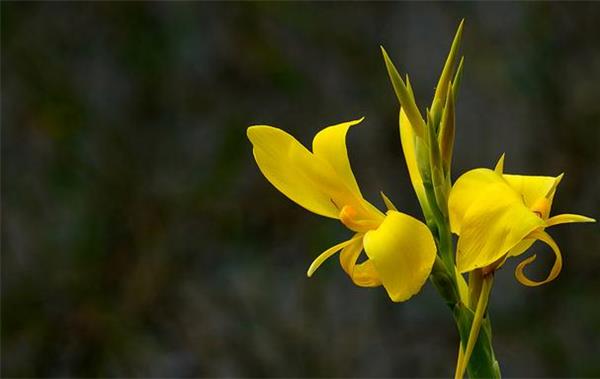How to cultivate Aquatic Canna Culture methods of Aquatic Canna
Beauty steaming, also known as red banana, is native to most of the tropical regions of the United States, Asia and Africa. So, how much do you know about aquatic canna? What are the cultivation methods of aquatic canna? Next, let's take a look at it.

An introduction to Aquatic Canna
Aquatic canna, also known as Florida Canna, is a large perennial herb native to South America and famous for ornamental flowers. at present, it is introduced and planted in many parts of the world, with yellow flowers similar to daffodils in shape and blooming in spring. but it can open sporadically to summer, and the plant height is about 1.2 meters.
Growth habits of aquatic canna
Aquatic banana has a strong nature, strong adaptability, like light, afraid of strong wind, suitable for growing in wet and shallow water, fertile soil or sandy soil can grow well, the suitable temperature for growth is 15-28 ℃, lower than 10 ℃ is not conducive to growth, there is no dormancy period in the origin, annual growth flowering, winter dormancy in cold areas in the north, the rhizome needs greenhouse protection to overwinter.

Culture methods of Aquatic Canna
1. Substrate: aquatic canna should be fertilized properly when it is planted outdoors, and relevant nutrient solution can be purchased when planting in the household.
2. Temperature: the suitable temperature for the growth of aquatic canna is 15-28 ℃, and less than 10 ℃ is not conducive to growth. Planting in the south can survive the winter outdoors, while it is cold in the north. The aboveground stems and leaves should be cleared, tubers should be dug out, slightly dried, stored in cellar or greenhouse with sand, and the temperature should be kept at 5-7 ℃. After 2-3 years in warm areas, the tubers should be dug out and replanted in the same place.
3. Lighting: aquatic canna likes light and should be cultured in a sunny place.
4. Watering: aquatic canna is resistant to flooding and can grow normally in water at a depth of 20 meters. Open-field planting can choose pool-side wetlands or shallow water to dig holes and plant tubers in the soil, covering the soil for 7-10 meters, and maintain humidity or shallow water after planting.
5. Fertilization: when the aquatic banana grows to 4-5 leaves, it is a sign of flowering. At this time, 2-3 potassium dihydrogen phosphate is applied, or it can be foliar sprayed with a concentration of 0.3%. 0.5%.
6. Diseases and insect pests: aquatic canna has strong resistance to diseases and insect pests, but it is necessary to keep the water clean, salvage duckweed in time, remove weeds, and pay attention to the harm of snails in the south. The control method is to mix trichlorfon and sawdust into a cloth bag, and then tie the cloth bag to the pseudo-stem, so that the bag floats on the water surface to fluctuate with the water, and the snail damage can be prevented after the liquid is spread.

Propagation methods of Aquatic Canna
1. Sowing and propagation: the sowing time should be carried out indoors from March to April. Before sowing, the seed coat should be broken with a steel file, soaked in warm water for one day, and then the seeds should be removed and controlled for dry water before sowing.
2. Segmented tuber: the propagation of segmented tuber usually takes out the tuber in the soil from March to April, removes sundries, and divides it with a shovel or sharp knife. Each tuber has 2-3 robust buds, which are used as propagation materials.
The flowering period of Canna
Canna is a perennial bulbous herbaceous flower. The plant height can reach 100~150cm, the rhizome is fat, and the aboveground stem is fleshy and unbranched. Stems and leaves are powdery, leaves alternate, broad, long elliptic-lanceolate. Wide oval. The raceme is drawn from the top of the stem, the flower diameter can reach 20cm, the petals extend straight, and have four petalized stamens. There are more than 50 varieties of flowers, such as milky white, bright yellow, orange, orange, pink, bright red, purple, complex spots and so on. The florescence of banana is from June to October in the north (north) and throughout the year in the south.

This is the end of the introduction to aquatic canna. I believe that after reading it, everyone will have a certain understanding of aquatic canna. I hope the relevant knowledge points introduced today can help you to a certain extent.
- Prev

[efficacy and function of Acorus calamus] inventory of the efficacy and function of Acorus calamus
[efficacy and function of Acorus calamus] inventory of the efficacy and function of Acorus calamus
- Next

[efficacy and function of duckweed] Analysis of the efficacy and function of duckweed
[efficacy and function of duckweed] Analysis of the efficacy and function of duckweed
Related
- Wuhan Hospital Iron Tree Blooming Result Was Instantly Frightened by the Gardener Master
- Which variety of camellia is the most fragrant and best? Which one do you like best?
- What is the small blue coat, the breeding methods and matters needing attention of the succulent plant
- Dormancy time and maintenance management of succulent plants during dormancy
- Minas succulent how to raise, Minas succulent plant pictures
- What are the varieties of winter succulent plants
- How to raise succulent plants in twelve rolls? let's take a look at some experience of breeding twelve rolls.
- Attention should be paid to water control for succulent plants during dormant period (winter and summer)
- Watering experience of twelve rolls of succulent plants
- Techniques for fertilizing succulent plants. An article will let you know how to fertilize succulent plants.

